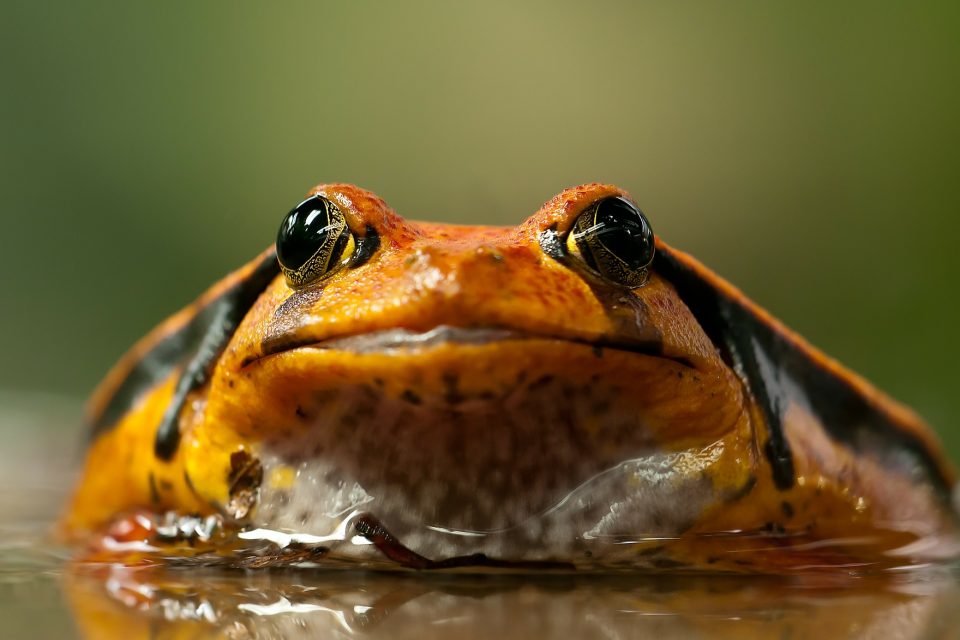
Are Amphibians Cold Blooded?
Amphibians evolved from lobe-finned fish roughly 370 million years ago and have exploded in diversity since then. There are now over 8,000 known species of amphibians, and more are discovered each year. How do they regulate their body temperature? Are amphibians cold-blooded? Before we can answer these questions, let’s first learn what an amphibian is.
Amphibian Anatomy
Many characteristics set amphibians apart from other classes of animals. Let’s look at some of the distinctions between amphibians, reptiles, and mammals.
- Skin: one of the biggest visual differences between amphibians and reptiles is the presence or absence of scales. Reptiles have a hard skin composed of scales, like snakes, lizards, and crocodiles. They rely on these scales for protection from UV rays, their environment, and moisture loss. Amphibians, on the other hand, have no such outer protective layer. Instead, their skin is much softer and typically always moist.
- Habitat: reptiles and mammals can exist surprisingly far away from a constant water source. The desert horned viper lives in the Saraha desert! Amphibians are not adept at living in the desert. Because they lack a good system to prevent water loss, they need to constantly be around a source of water. That’s why you’ll most likely find them near streams, rivers, lakes, and the rain forest.
- Life cycle: most amphibians go through a process known as metamorphosis during their life cycle. Most people are most familiar with this process in the context of caterpillars becoming butterflies and tadpoles becoming frogs. All of these transitions represent significant changes in body shape and types and are all called metamorphosis.

Types of Amphibians
Amphibians are a class of animals, representing the third highest biological classification. As a group, they are referred to as Amphibia. All modern amphibians can be grouped into the subclass Lissamphibia. Beyond this subclass, there are three orders of amphibians that represent all of the species.
- Anura: Anura comes from the Greek roots of ‘without’ and ‘tail’. This order includes frogs and toads. Generally, frogs are classified by their smooth skin, whereas toads are classified by their warty skin. Anura represents over 90% of all amphibians, and they live everywhere on the globe except for the poles.
- Caudata: This order’s name comes from the Latin term for ‘tail’, and includes all of the salamanders. While they look like lizards they are almost nothing alike. Caudata also varies widely in their body size. Many salamanders only reach about 3 cm (1 inch) in length, but the Chinese giant salamander (Andrias davidianus) can grow to be upwards of 180 cm (5.9 ft) in length.
- Gymnophiona: these amphibians name comes from the Greek word ‘gymnos’ meaning naked and ‘ophis’ which translates to serpent. This order of amphibia is likely the least known to the general public as it comprises the caecilians. Visually, they look very similar to some species of snakes and worms, although they only possess rudimentary eyes covered by skin. They vary in length from a few centimeters to over 150 cm (4.9 feet).

Are Amphibians Cold Blooded?
Yes, Amphibians are cold-blooded. The difference between cold-blooded and warm-blooded animals lies in how species control their core body temperature.
Cold-blooded animals (known as ectotherms) are at the mercy of their environment. These animals do not have the same mechanisms as endotherms to regulate their core body temperature – like sweating, shivering, or heat production. Instead, they move to different locations during the day to catch the sun or shade, depending on what the organism needs. This is why snakes and other reptiles can often be seen sunbathing on rocks in the morning but are often hiding once the temperature gets too hot. They are attempting to regulate their body temperature by moving from warm to cool areas.
Animals that are warm-blooded (also known as endotherms), like humans, maintain a fairly constant internal body temperature. That temperature can vary drastically from animal to animal, but endotherms use the energy they derive from the food they eat to maintain homeostasis – a set of constant internal conditions.
Ectothermic Amphibians
All members of Amphibia are cold-blooded. Frogs, toads, salamanders, and caecilians all need to utilize the sun and shade balance to regulate their internal temperature. Due to the habitat of most amphibians, this typically isn’t a difficult task. Because they usually live so close to water, they are capable of cooling down very quickly, and the climate in which amphibians live is typically one that is very hot. In places like the Amazon rain forest, living on the banks of a small stream in such hot, humid conditions provides the perfect environment for these animals to survive and thrive.
That being said, amphibians are one of the most vulnerable classes of animals on planet earth. Over 70% of the world’s amphibian species are in decline due to habitat loss, global warming, and other human activities. If you appreciate the diverse and interesting world of amphibia, consider donating to organizations that fight to save their habitats today!












